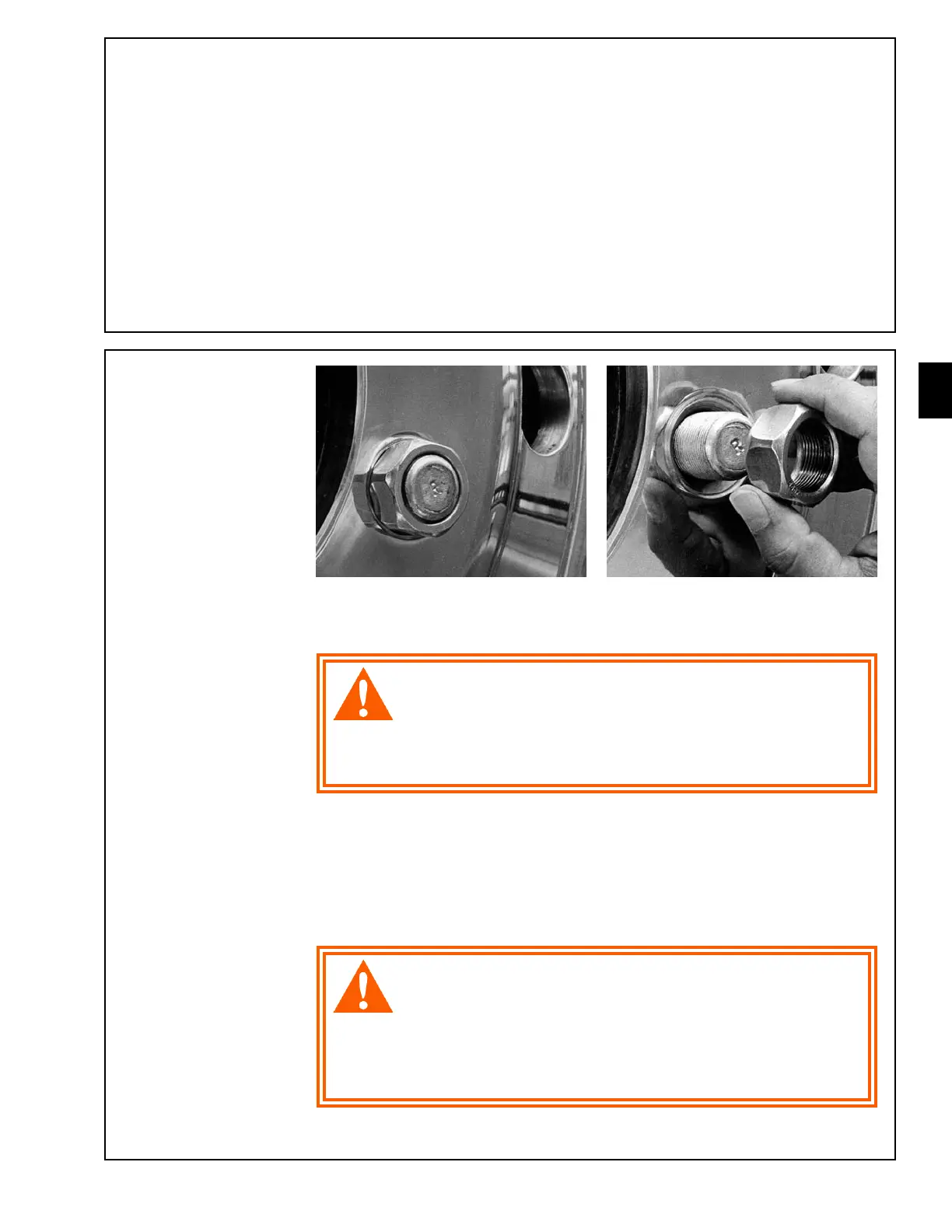4
WARNING
29
Cap nut thread
engagement,
stud located
wheels, ball seat
mounting
4-8
The actual length of thread engagement present in an assembled wheel can not always
be determined by visual inspection or measurement of a tightened assembly. The relationship
of the wheel cap nut seat to the end of the stud may vary. If there is any doubt that
enough thread engagement is present, the number of engaged threads may be counted.
Tighten all nuts in the regular manner, then loosen one to hand-tightness. The number
of turns to disengage a 1-1/8-inch nut should be at least five full turns. At least seven
full turns should be required to disengage a 3/4-inch nut. Ideally, when torqued to the
proper load, the stud should be flush with the face of the nut. The face of the nut may
be recessed in nuts that are taller for improved wrenching. With most of the nuts in
present use, a few unengaged threads at the outer end will cause no problem provided
at least 5-7 full turns are required to disengage the nut depending on thread size.
Cap nuts made to Alcoa specification usually give more than the necessary thread
engagement on a given stud.
Some states have laws which dictate full thread engagement or thread engagement past
the nut body. Make sure you know the laws for the states in which you operate and comply.
Tightening stud
located, ball seat
cap nuts
4-9
The number of turns to disengage a 1-1/8-inch nut should be at least five full turns.
At least seven full turns should be required to disengage a 3/4-inch nut.
WARNING Lubricants should not be applied to the cap nut seat or to the cap
nut-to-wheel contact surface.
Oiled seats can lead to over-torquing which can stretch studs causing failure
of studs. Failed studs can cause the wheel to disengage from the vehicle,
causing injury or death.
Lubricants must be completely removed from the cap nut seats and contact
surfaces if applied accidentally.
Cap nuts must be kept tight, and studs and nuts should be checked frequently. Nuts
should be retorqued if necessary. At tire changes, nuts and studs should be inspected
for cracks and stripped or damaged threads. After each wheel mounting, cap nut torque
should be checked with a torque wrench.
Impact wrenches, if used, should be carefully adjusted to apply torques within the limits
recommended. Torquing of cap nuts should be done in recommended sequences.
WARNING Undertorqued cap nuts allow wheels to run loose, pounding out
(deforming) the ball seats, fatiguing studs or losing nuts. Overtorquing can
stretch studs causing them to fail.
Both under and overtorquing can lead to wheels coming off, causing injury
or death.
Check all parts, including wheels, studs and cap nuts. Check mounting
faces of wheels, hubs and drums. Check for dirt, corrosion or damage.
Remove dirt and rust; replace damaged parts. Follow correct tightening
sequences and torque levels.
Continued on next page
WARNING

